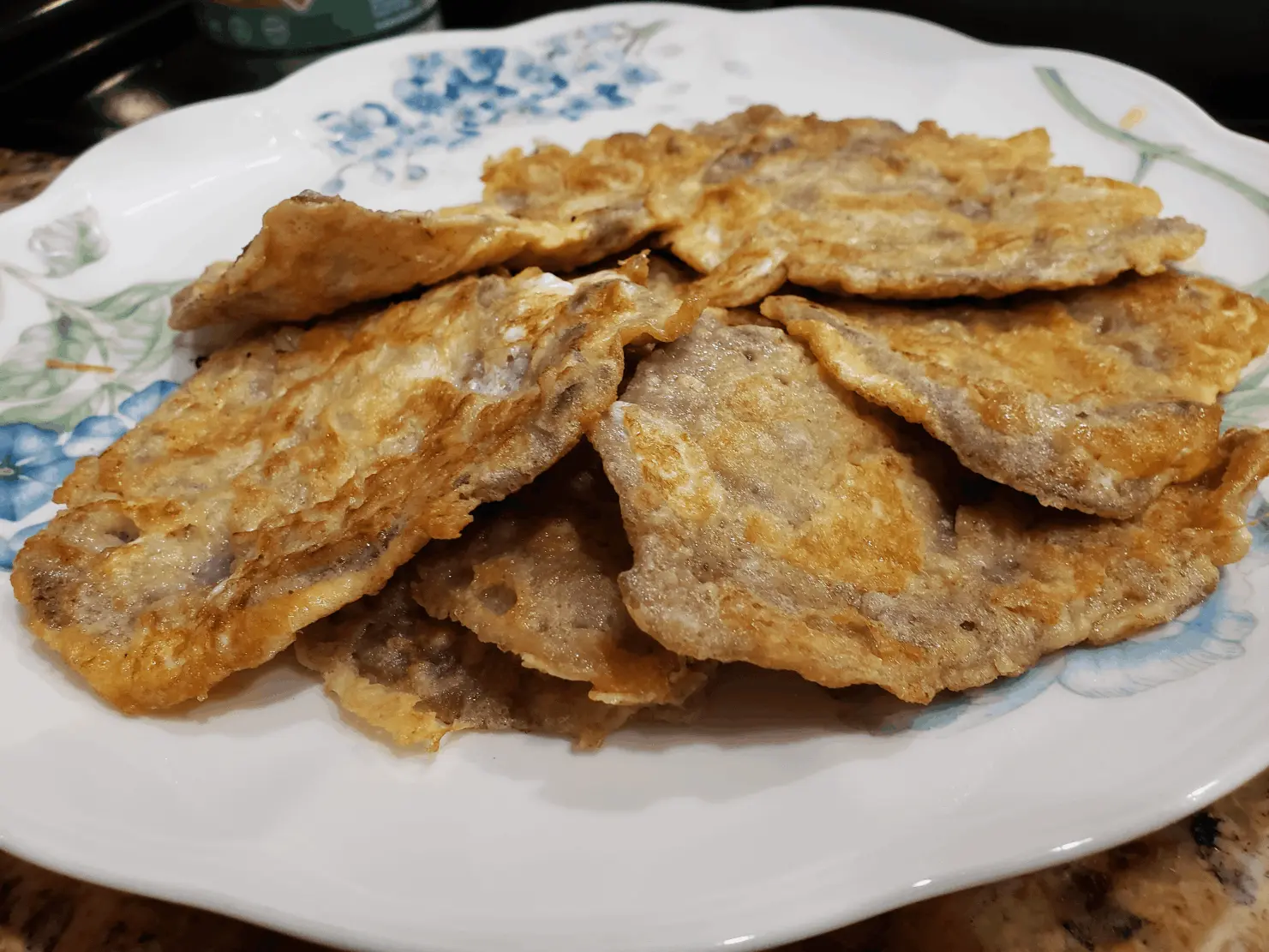Food Notes
Choganjang - A Korean Seasoned Dipping Sauce

Article by Gil "hannaone"
© Copyright 2024. All rights reserved.
Image by hannaone: Hobak Jeon
How to Make Choganjang
For approximately ¼ cup of basic traditional sauce:
1½ tablespoon soy sauce,
1 ½ tablespoon vinegar,
1/4 teaspoon corn syrup
1 tablespoon water
Optional additions:
1 clove of garlic, minced
1 teaspoon sesame oil
½ teaspoon sugar
½ teaspoon gochugaru
Instructions:
1. In a small bowl, combine the soy sauce, vinegar, corn syrup, and water.
2. Mix well until the ingredients are thoroughly combined.
3. If desired, add in minced garlic, sesame oil, and sugar to enhance the flavor of the sauce.
4. Let the sauce stand for at least 15 minutes before using to allow the flavors to blend together.
5. Taste and adjust the seasoning as needed by adding more soy sauce for saltiness, vinegar for tanginess, or sugar for sweetness.
6. Use immediately or store in an airtight container in the refrigerator for up to one week.
7. Serve with your favorite Korean Jeon dishes such as hobakjeon (호박전) or Daegujeon (대구전) for a delicious and authentic taste of Korean cuisine. Enjoy!
Some Choganjang Facts
The name "choganjang" comes from the two Korean words "cho" meaning vinegar and "ganjang" meaning soy sauce. This reflects the main ingredients in the sauce, which are vinegar and soy sauce. However, over time, other ingredients like garlic, sugar, and sesame oil have been added to enhance its flavor.
Choganjang is a dipping sauce typically served with jeon (Korean pancakes) or fried foods such as fried chicken, dumplings, and vegetables. It is also used as a marinade for meats like beef and pork.
Some History
The exact origins of choganjang are unclear, but it is believed to have originated in the Jeolla region of South Korea. It was traditionally made at home by mixing vinegar and soy sauce with other ingredients like garlic and sugar.
Variations
There are many variations of choganjang depending on personal taste and regional differences. Some versions may use different types of vinegar or substitute soy sauce with other sauces like gochujang (Korean chili paste).
Other Uses
Apart from being a popular dipping sauce in Korean cuisine, Choganjang can also be used in various other ways. Its rich and savory flavor makes it a versatile ingredient that can enhance the taste of many dishes.
One of the most common uses of Choganjang is as a marinade for meats. The sauce's bold flavors make it perfect for marinating different types of meat, such as beef, pork, or chicken. Simply mix Choganjang with some oil and other desired spices, and let your chosen meat soak in the marinade for at least an hour before cooking. The result will be tender, flavorful meat that is sure to tantalize your taste buds.
For vegetarians or those looking to cut down on their meat consumption, Choganjang can also be used as a flavoring for plant-based proteins such as tofu or tempeh. You can marinate these proteins in Choganjang before grilling or baking them to add a burst of umami flavor.
Choganjang can also be added directly into stir-fries and stews to give them an extra kick of flavor. Its bold taste pairs well with vegetables like mushrooms, onions, and bell peppers. You can also use it as a base for sauces by mixing it with other ingredients like honey or vinegar.
If you're feeling adventurous in the kitchen, you can use Choganjang to experiment with fusion dishes. It pairs surprisingly well with other cuisines, such as Mexican or Italian, and can add a Korean twist to your favorite dishes.
Choganjang's uses go beyond being just a dipping sauce. Its versatility makes it a must-have ingredient in any kitchen, adding depth and flavor to various dishes. So, next time you reach for the familiar soy sauce or ketchup, consider giving Choganjang a try and see how it elevates your cooking game.

Image by hannaone: Hobak Jeon
